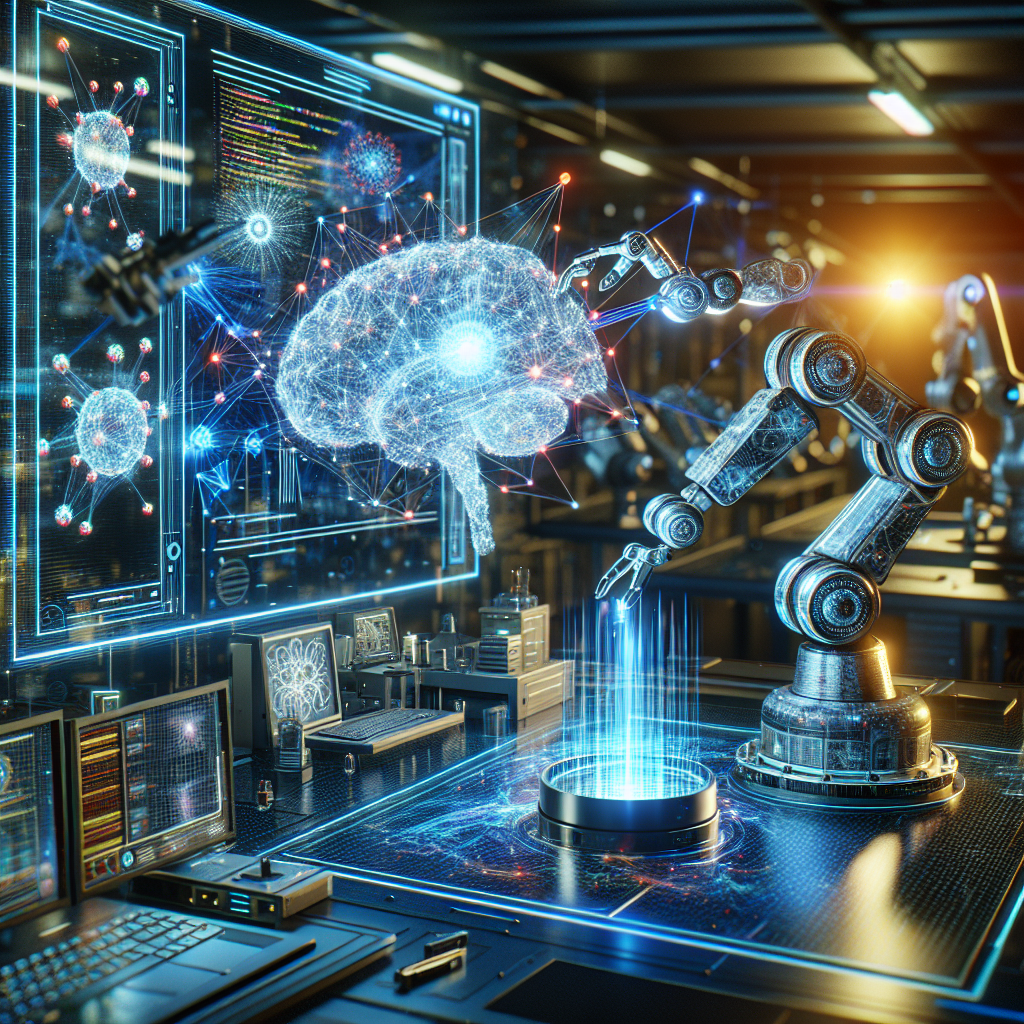Generative AI and robotics are two rapidly advancing fields that are revolutionizing various industries and changing the way we interact with technology. When these two technologies intersect, the possibilities are endless. This article will explore the intersection of generative AI and robotics, discussing how they complement each other and the potential applications that arise from their collaboration.
Generative AI, also known as generative adversarial networks (GANs), is a type of artificial intelligence that is used to generate new data samples that are similar to a given dataset. GANs consist of two neural networks – a generator and a discriminator – that work together to produce realistic outputs. These networks are trained using a dataset of real examples, such as images or text, and learn to generate new data that is indistinguishable from the original dataset.
On the other hand, robotics is the field of engineering and technology that deals with the design, construction, operation, and application of robots. Robots are machines that are capable of carrying out complex tasks autonomously or semi-autonomously. They can be used in a variety of industries, including manufacturing, healthcare, logistics, and agriculture, to perform tasks that are dangerous, repetitive, or require precision.
When generative AI and robotics come together, they create a powerful combination that can revolutionize the way robots are designed and operated. By leveraging generative AI algorithms, robots can be trained to perform tasks more efficiently and effectively. For example, generative AI can be used to generate realistic simulations of the environment in which a robot operates, allowing it to learn how to navigate and interact with its surroundings more effectively.
One of the key benefits of combining generative AI and robotics is the ability to create more intelligent and adaptive robots. By using generative AI algorithms, robots can learn from their experiences and improve their performance over time. This enables robots to adapt to new situations and environments, making them more versatile and capable of handling a wider range of tasks.
Another potential application of generative AI in robotics is in the field of robot design and optimization. By using generative AI algorithms, researchers can generate new designs for robots that are more efficient, robust, and cost-effective. These algorithms can explore a wide range of design possibilities and identify the best solutions based on a set of predefined criteria, such as performance, cost, and energy efficiency.
In addition, the intersection of generative AI and robotics can also lead to advancements in collaborative robotics, where robots work together with humans to perform tasks. Generative AI algorithms can be used to train robots to understand human behavior and intentions, enabling them to collaborate with humans more effectively. This can be particularly useful in industries such as healthcare, where robots can assist healthcare professionals in tasks such as patient care, surgery, and rehabilitation.
Overall, the intersection of generative AI and robotics has the potential to revolutionize various industries and create new opportunities for innovation. By combining the power of generative AI algorithms with the capabilities of robots, researchers and engineers can develop more intelligent, adaptive, and versatile robotic systems that can perform a wide range of tasks autonomously or in collaboration with humans.
FAQs
Q: What are some examples of applications of generative AI in robotics?
A: Some examples of applications of generative AI in robotics include robot design and optimization, simulation of robot environments, and collaborative robotics.
Q: How can generative AI algorithms improve the performance of robots?
A: Generative AI algorithms can improve the performance of robots by enabling them to learn from their experiences, adapt to new situations, and optimize their behavior based on predefined criteria.
Q: What are some challenges associated with the intersection of generative AI and robotics?
A: Some challenges associated with the intersection of generative AI and robotics include the need for large datasets for training generative AI algorithms, the complexity of designing and implementing intelligent robotic systems, and ensuring the safety and reliability of robots in real-world environments.
Q: What are some future trends in the intersection of generative AI and robotics?
A: Some future trends in the intersection of generative AI and robotics include advancements in collaborative robotics, the development of more intelligent and adaptive robots, and the integration of generative AI algorithms into robotic systems for real-time decision-making and optimization.

